News & Insights
Clearing the Path to Healthy & Sustainable Building by Selecting the Right Rating System
April 14, 2021
The challenge today is to identify which rating system is the one that will fit the project goals and expectations best.
Before diving into the ratings evaluation, owners and design teams should start by defining the project scope, type and goals. Below is a summary of relevant information to guide the selection of the most relevant certification system:
Project Typology – Define whether the project will be new construction, renovation of an existing building, interior fit-out, core and shell, etc. Certification systems handle each project type separately in order to ensure applicability and facilitate implementation.
Building Use – Recognizing that building use influences design and performance, most rating systems assign different requirements based on this factor to prioritize the most impactful strategies for each use and best support occupant needs.
Level of Commitment – Some projects do not have the budget or scope to be able to incorporate the strategies to achieve the highest levels of certification. To encourage all building owners to create the most sustainable building possible, the rating systems discussed below have created paths for projects to achieve different levels of sustainability and still significantly contribute to decreasing the human impact on the environment and support occupant well-being.
Primary Objectives – Understanding the links between people, planet and profit can help define a project’s primary objectives. Whether the project focus is energy conservation in order to lower expenses or ensure occupant health and wellbeing, establishing project imperatives will guide teams toward the most appropriate certification system.
Combining More than One
Leveraging the benefits of different rating systems requires a clear understanding of all the synergies that can enhance or detract from a project’s attributes. For example, a WELL project may be enhanced by also applying for RESET AIR certification to ensure continuously documented air quality performance. The International WELL Building Institute has created a comparative analysis between the WELL certification and other leading rating systems to identify crosswalks and alignments. Links to these documents are available in the resources section1.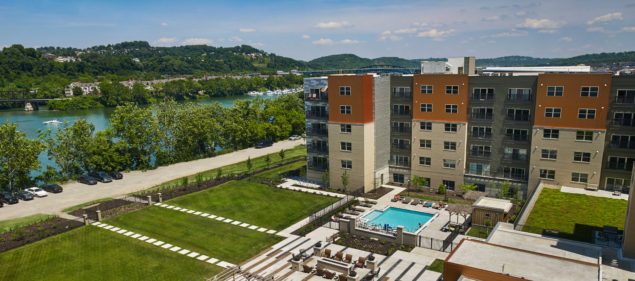
The Yards at 3 Crossings
When managing a large portfolio of buildings or multiple projects with varied scopes and sizes, implementing a tiered system that ranks projects by size, budget and scope can establish minimum health and environmental goals for each project tier.
The Common Denominators
Most certification systems were created to provide clarity through metrics that rate construction projects as good, better, and best.While some are holistic and intend to address issues from site selection to maintenance and operations, others focus primarily on systems efficiency and the impact the building has on occupants and their wellbeing.
Starting with some of the well-known and inclusive systems:
Occupant wellness is addressed through the Indoor Environmental Quality category which provides guidelines for indoor air quality, thermal comfort, daylighting, and acoustic performance among others.
Social equity is partially addressed through the Materials and Resources credits that require the use of products and materials that have environmentally, economically, and socially optimized life-cycle impacts.
LEED has expanded its reach into community planning by adding the Neighborhood Development typology to their already comprehensive list of project types.
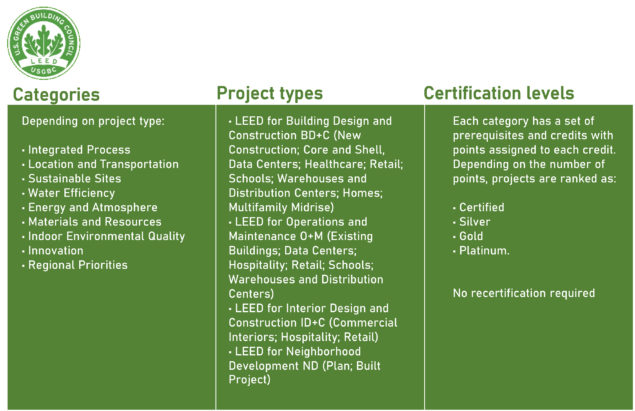
The certification process is handled through LEED’s online service and it requires the use of LEED forms and templates in addition to documentation, such as drawings and narratives specifically created for certain credits. GBCI (Green Business Certification Inc.) conducts the review and no inspections or re-certifications are required once a building is certified.
The Materials petal includes a Red List of products that have been determined to be toxic or contain harmful chemicals. These materials must be avoided by 90% of the new materials used in the project. This percentage is calculated by cost.
LBC is also unique because it incorporates topics of Urban Agriculture, Biophilia, Universal Access, and Human Scaled Living that are designed to promote community and nature integration.
Recognizing that full compliance with these goals can be difficult for most projects, LBC has developed the “Petal Certification” by achieving certain petals or categories only.
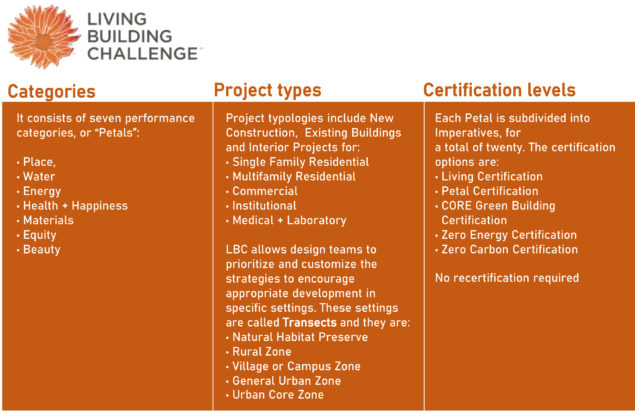
Project teams use the certification online portal to upload the project materials and an ILFI auditor conducts the review. Projects are required to provide twelve months of performance occupancy data before they can apply for certification. No inspections or re-certifications are required once a building is certified.
Categories covered by this standard also include sustainable site development, water, and energy efficiency, indoor environment, and transportation.
Green Globes Materials category has a strong focus on product safety risk assessment and sustainable attributes such as bio-based and pre/ post-consumer recycled content.
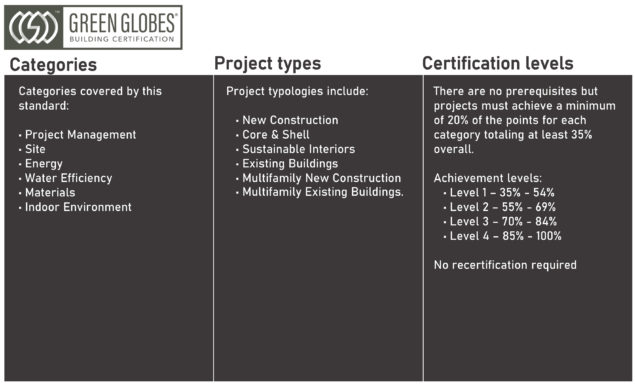
Certification is web-enabled and requires design reviews and on-site assessment visits conducted by a Green Globes Assessor. GBI doesn’t require re-certifications but encourages them to be done every three years for benchmarking purposes and to track building performance.
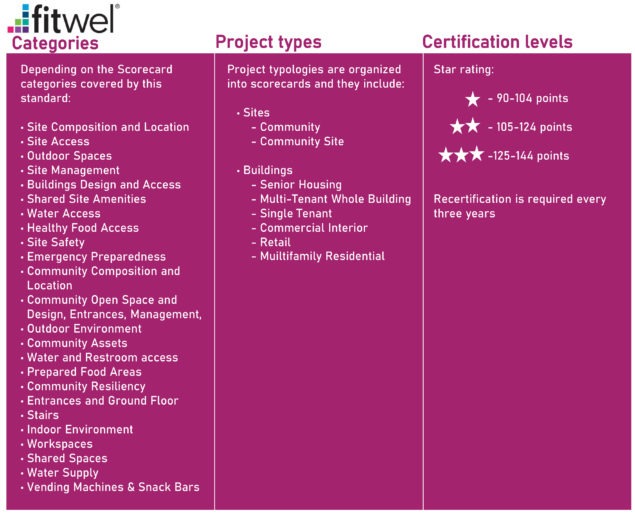
The certification uses a double-blind process, two independent reviewers evaluate the project and confirm scores. Design Certification is available for new construction and major renovation once a project is established and prior to certification. This certification is valid for three years, then teams must apply for Built Certification. Recertification is required every three years.
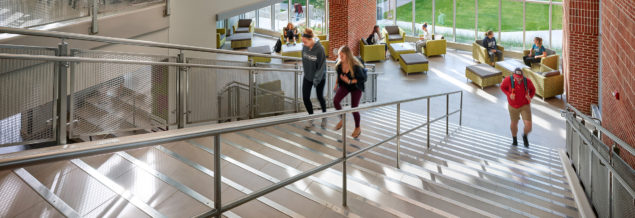
PSU-Findlay Commons
Ratings with Special Focus
WELL buildings are designed to help occupants develop healthier lifestyles by incorporating Concepts such as Movement and Nourishment. Some Concepts are familiar to other rating systems such as Water and Materials, however, their priorities are very different. While LEED and Green Globes seek water efficiency, WELL rates the quality and availability of water provided to building occupants. Similar to LBC, LEED, and Green Globes, the Materials Concept in WELL also has a strong focus on decreasing the use of hazardous materials from a building and requires Health Product Declarations (HPD) and other material labels to document materials life-cycle impacts.
WELL goes beyond building design and construction by incorporating the Mind Concept that requires companies to establish and implement policies that promote and support mental health, stress management, and a healthy work-life balance.
The Community Concept addresses issues of accessibility, diversity and inclusion, new parent support, and emergency preparedness among others.
WELL v2 Beta Features under the Community Concept are: Emergency Resilience and Recovery; Housing Equity; Responsible Labor Practices and Support for Victims of Domestic Violence.
The WELL Community Standard was created to expand the benefits of WELL for buildings to a community level by emphasizing inclusivity and resiliency.
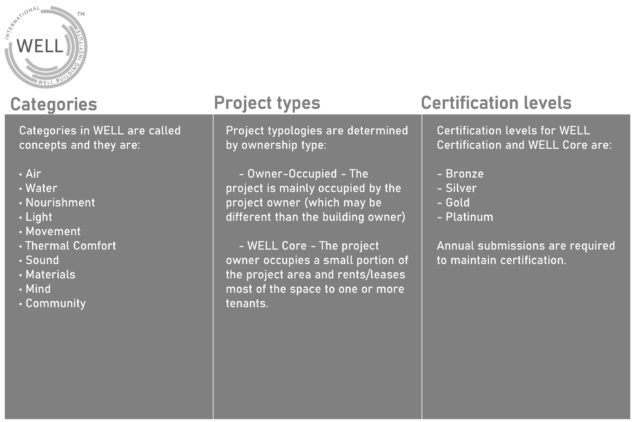
Certification is handled online through the WELL Digital Platform. GBCI reviews and approves the documentation submitted by project teams. Projects can be Pre-certified to demonstrate commitment to health and wellness and be able to market projects under development to potential tenants and investors.
On-site performance testing and verification is required prior to final certification and it is conducted by GBCI WELL Performance Testing Agents.
Annual submissions are required to maintain certification.
This is a modularized standard so project teams can achieve only the modules that best fit their needs. There are three modules under development: Water, Energy, and Circularity (Recycling/ waste management). The Materials module is in pilot phase and it intends to provide guidelines for the specification and installation of building materials and their impact on the environment and human health.
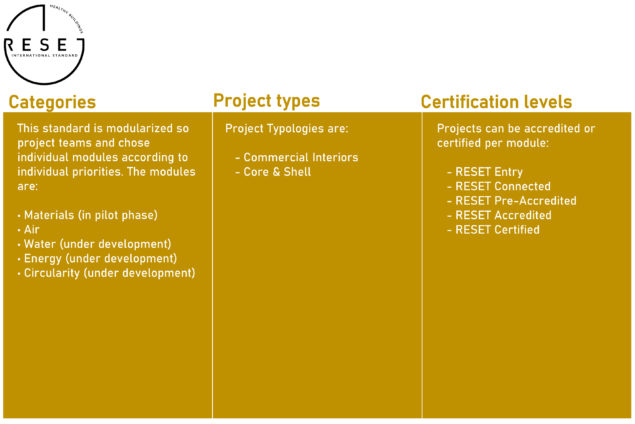
Projects seeking certification under RESET Air module must use accredited monitors, accredited data providers, and accredited professionals. A series of audits are conducted to confirm the project is within performance targets.
RESET Air requires yearly re-certification and fees are dependent on project type and size.
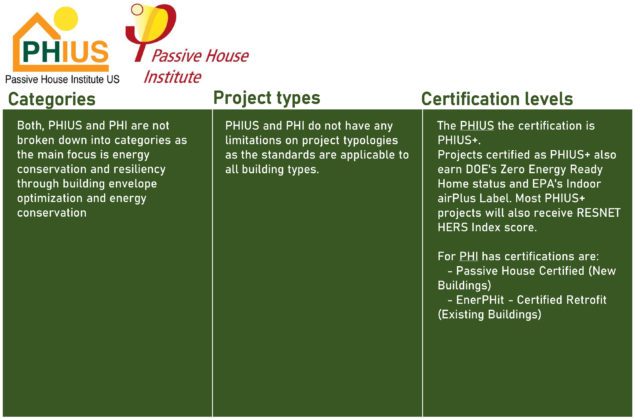
PHI certifies not only buildings but building components such as windows, heat pumps, etc. Both PHI and PHIUS require on-site verifications conducted by Passive House trained and certified professionals.
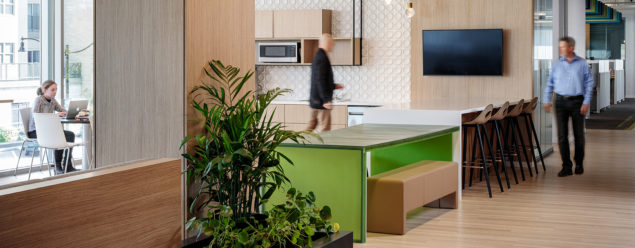
VOCI Technologies
Resources:
1 https://standard.wellcertified.com/well-crosswalks
2 https://www.usgbc.org/leed
3 https://living-future.org/lbc/
4 https://thegbi.org/green-globes-certification/
5 https://fitwel.org/
6 https://www.wellcertified.com/certification/v2/
7 https://www.reset.build/standard
8 https://passivehouse.com/
9 https://www.phius.org/home-page
1 https://standard.wellcertified.com/well-crosswalks
2 https://www.usgbc.org/leed
3 https://living-future.org/lbc/
4 https://thegbi.org/green-globes-certification/
5 https://fitwel.org/
6 https://www.wellcertified.com/certification/v2/
7 https://www.reset.build/standard
8 https://passivehouse.com/
9 https://www.phius.org/home-page
